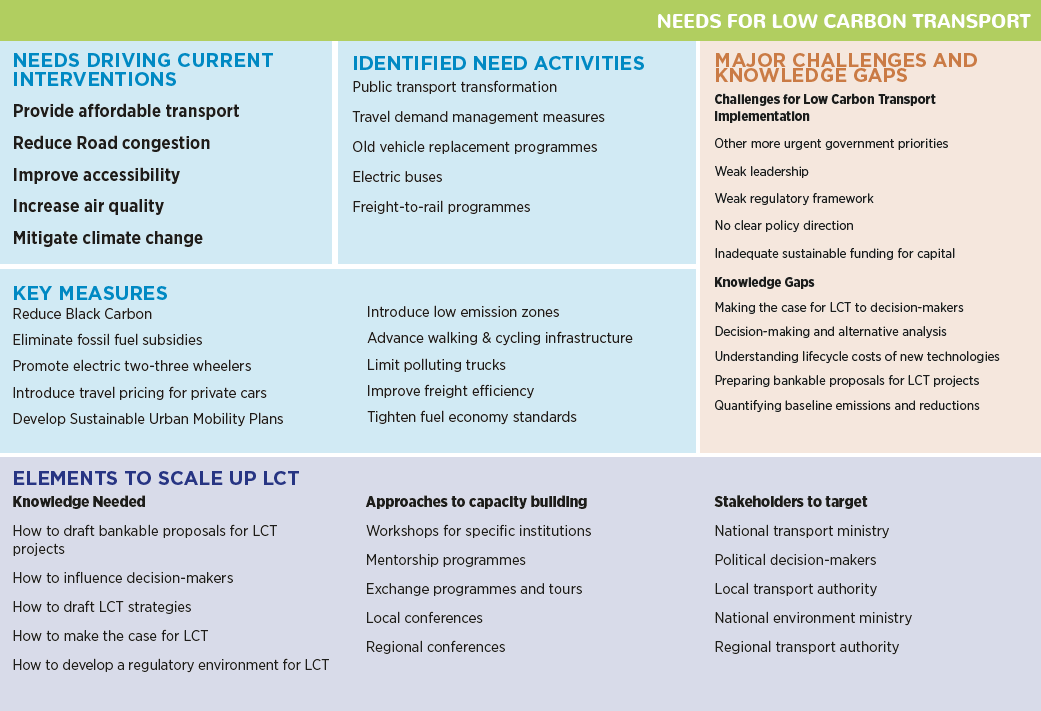Dr Gary Haq is an Associate of the Stockholm Environment Institute at the Department of Environment and Geography, University of York, and an advisor on low-carbon transport for the High Volume Transport (HVT) applied research programme funded by the UK Department for International Development. In this blog post, Gary highlights the urgent need for reducing carbon emissions from transport and how the HVT programme will help countries in Africa and South Asia make the transition towards low-carbon transport.
Climate change is an emergency. If we fail to reduce greenhouse gas (GHG) emissions and global warming, future generations and especially the poor will be hard hit. As transport is a major contributor to GHGs with emissions from this sector rising faster than any other, a crucial battle in the fight against climate change will take place in this area.
Low-income countries (LICs) have the option to adopt a low-carbon trajectory. While their emissions are much lower than high-income countries’, rapid motorisation and urbanisation will increase GHGs from transport and air pollution in cities. This poses a threat to health and jeopardises the goal to limit global warming to below 1.5 °C above pre-industrial levels.
While LICs recognise the need to reduce transport emissions to meet climate goals, other challenges dominate the political agenda, such as health, poverty, urban mobility and accessibility. The High-Volume Transport (HVT) programme is the UK Department for International Development (DFID) response to put this issue under the spotlight and help reduce emissions from transport across Africa and South Asia.
What challenges stand in the way of low-carbon transport?
To understand the current situation in LICs and the challenges towards achieving low-carbon transport, in Part 1 of the HVT programme we commissioned the Partnership for Sustainable Low Carbon Transport (SLoCaT) to review the literature and evidence available. Our aim was to use these findings to prioritise areas to be researched in Part 2.
As the figure below shows, we found that low-carbon transport is not a political priority in LICs. Moreover, while many transport interventions implemented in these countries contribute to climate change mitigation, their intended purpose is to improve access, reduce congestion, increase equity, and improve air quality and energy security.

Yet, we identified 10 ‘quick win’ measures that match local priorities with global co-benefits, and that LICs could already implement in the short term to reduce GHGs from transport, with significant gains for sustainable development. These include:
- Fossil fuel subsidy phase-out
- Sustainable Urban Mobility Plans and National Urban Mobility Programmes
- Electric two- and three-wheelers
- Limit import of inefficient and polluting second-hand trucks
- Low-emission zones
- Pricing of car use
- Fuel economy standards and incentives
- Non-motorised transport (NMT) infrastructure
- Logistics optimisation / freight efficiency
- Diesel quality standards
The potential of such interventions to mitigate climate change is significant, and their implementation could drive the decarbonisation of the transport sector and help achieve long-term climate targets. Yet, putting these interventions in place is still challenging for many LICs. Interviews of transport actors in these countries highlighted four main barriers to implementation:
- Financial/economic, e.g. lack of targeted finance for low-carbon transport.
- Political/social, e.g. low-carbon agenda can be a political risk as constituents’ demands are in other areas.
- Technical, e.g. low-carbon technologies are not available or used in LICs.
4. Institutional/regulatory, e.g. limited or lack of coordination between implementing authorities.
These challenges have multiple roots. For example, the low priority given to low-carbon transport is partly due to gaps in knowledge. Our research revealed that stakeholders need to know more about how to carry out low-carbon high-volume transport measures rather than what measures to implement. This suggests that many transport practitioners know what they should do to advance low-carbon transport, but do not know how to go about it. This is due to a lack of experience and tacit knowledge gained from delivering low-carbon transport projects.
Part 1 also found that a disconnect exists between top-down perspectives of what needs to be done to achieve low-carbon transport and bottom-up perspectives on what can be achieved at the individual project and policy level. The HVT programme identified key research areas to bridge these knowledge gaps, and where further evidence could lead LICs to implement low-carbon measures.
HVT aims to help LICs transport authorities apply the research we are producing to make low-carbon evidence-based choices and, in doing so, avoid the high emission trajectories experienced in middle-income countries. As a consequence, capacity building and research uptake activities will play a central role in Part 2.
This way, we will contribute to improving the quality of life of African and South Asian citizens, provide clean air and meet global climate and sustainable development goals.

